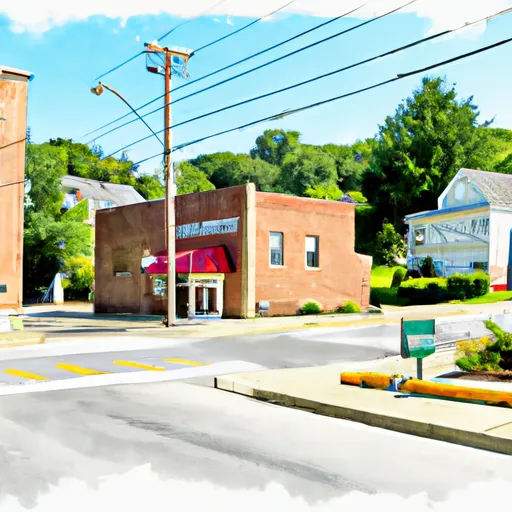-
 Snoflo Premium
Snoflo Premium
Get unlimited access to all our content
With no Ad interruptions! - Start Your Free Trial Login with existing account
Marwood
Eden Index
Climate
7.8
•
Recreation
2.8
•
Community
•
Safeguard
4.1/10

Marwood, Pennsylvania is a picturesque town nestled in the heart of the state, offering a charming blend of natural beauty and outdoor recreation opportunities. The climate in Marwood can be described as continental, characterized by warm summers and cold winters. Average temperatures range from around 25°F (-4°C) in winter to 85°F (29°C) in summer, with moderate rainfall throughout the year.
Hydrology plays a significant role in Marwood's landscape, with several small creeks and streams meandering through the area. These water bodies not only enhance the town's beauty but also provide opportunities for fishing, kayaking, and canoeing.
Outdoor enthusiasts will find a plethora of recreational activities to enjoy in Marwood. The surrounding forests and parks offer ample opportunities for hiking, camping, and wildlife observation. Marwood State Park, located just outside the town, provides miles of trails, picnic areas, and a serene lake for boating and fishing. Additionally, the nearby Appalachian Mountains offer breathtaking views and are perfect for adventurous activities, such as rock climbing and mountain biking.
In summary, Marwood, Pennsylvania, offers a delightful climate with distinct seasons, a network of waterways, and abundant outdoor recreation opportunities, making it an idyllic destination for nature lovers and adventure seekers.
What is the Eden Index?
The Snoflo Eden Index serves as a comprehensive rating system for regions, evaluating their desirability through a holistic assessment of climate health, outdoor recreation opportunities, and natural disaster risk, acknowledging the profound impact of these factors on livability and well-being.
Climate Health Indicator (CHI): 7.8
Marwood receives approximately
1078mm of rain per year,
with humidity levels near 83%
and air temperatures averaging around
10°C.
Marwood has a plant hardyness factor of
6, meaning
plants and agriculture in this region thrive during a short period during spring and early summer. Most
plants will die off during the colder winter months.
By considering the ideal temperature range, reliable water supplies, clean air, and stable seasonal rain or snowpacks, the Climate Health Indicator (CHI) underscores the significance of a healthy climate as the foundation for quality living.
A healthy climate is paramount for ensuring a high quality of life and livability in a region, fostering both physical well-being and environmental harmony. This can be characterized by ideal temperatures, reliable access to water supplies, clean air, and consistent seasonal rain or snowpacks.
Weather Forecast
Streamflow Conditions
Allegheny
Area Rivers
Allegheny
Snowpack Depths
Allegheny
Reservoir Storage Capacity
Allegheny
Groundwater Levels
Recreational Opportunity Index (ROI): 2.8
The Recreational Opportunity Index (ROI) recognizes the value of outdoor recreational options, such as parks, hiking trails, camping sites, and fishing spots, while acknowledging that climate plays a pivotal role in ensuring the comfort and consistency of these experiences.
Access to outdoor recreational opportunities, encompassing activities such as parks, hiking, camping, and fishing, is crucial for overall well-being, and the climate plays a pivotal role in enabling and enhancing these experiences, ensuring that individuals can engage in nature-based activities comfortably and consistently.
Camping Areas
| Campground | Campsites | Reservations | Toilets | Showers | Elevation |
|---|---|---|---|---|---|
| Coopers Rock State Forest | None | 2,154 ft | |||
| Two Mile Run County Park | None | 1,304 ft | |||
| Chestnut Ridge Regional Park | None | 2,268 ft |
Nearby Fishing
Nearby Ski Areas
Catastrophe Safeguard Index (CSI):
The Catastrophe Safeguard Index (CSI) recognizes that natural disaster risk, encompassing floods, fires, hurricanes, and tornadoes, can drastically affect safety and the overall appeal of an area.
The level of natural disaster risk in a region significantly affects safety and the overall livability, with climate change amplifying these risks by potentially increasing the frequency and intensity of events like floods, fires, hurricanes, and tornadoes, thereby posing substantial challenges to community resilience and well-being.
Community Resilience Indicator (CRI):
The Community Resilience Indicator (CRI) recognizes that education, healthcare, and socioeconomics are crucial to the well-being of a region. The CRI acknowledges the profound impact of these elements on residents' overall quality of life. By evaluating educational resources, healthcare accessibility, and economic inclusivity, the index captures the essential aspects that contribute to a thriving community, fostering resident satisfaction, equity, and social cohesion.

